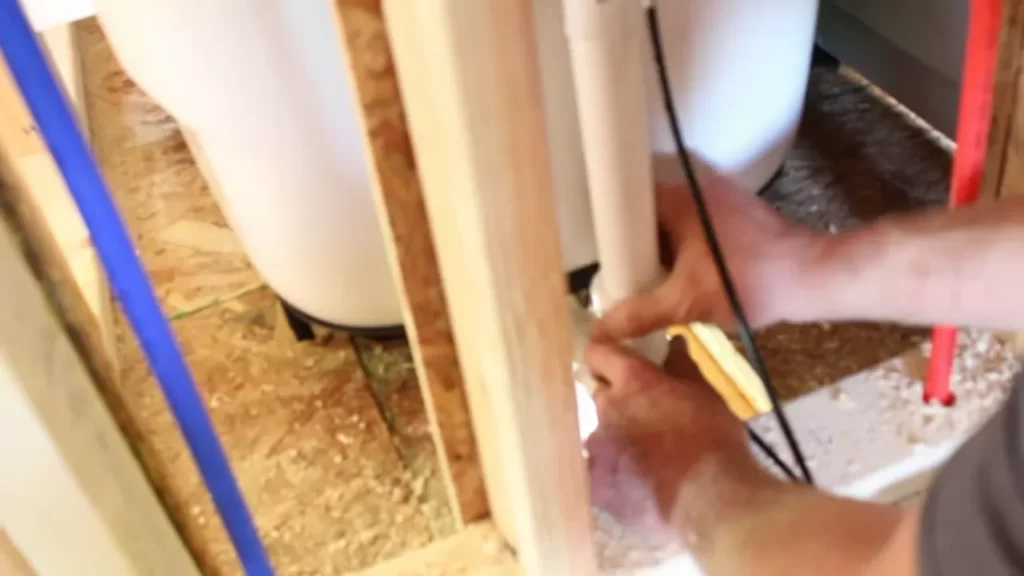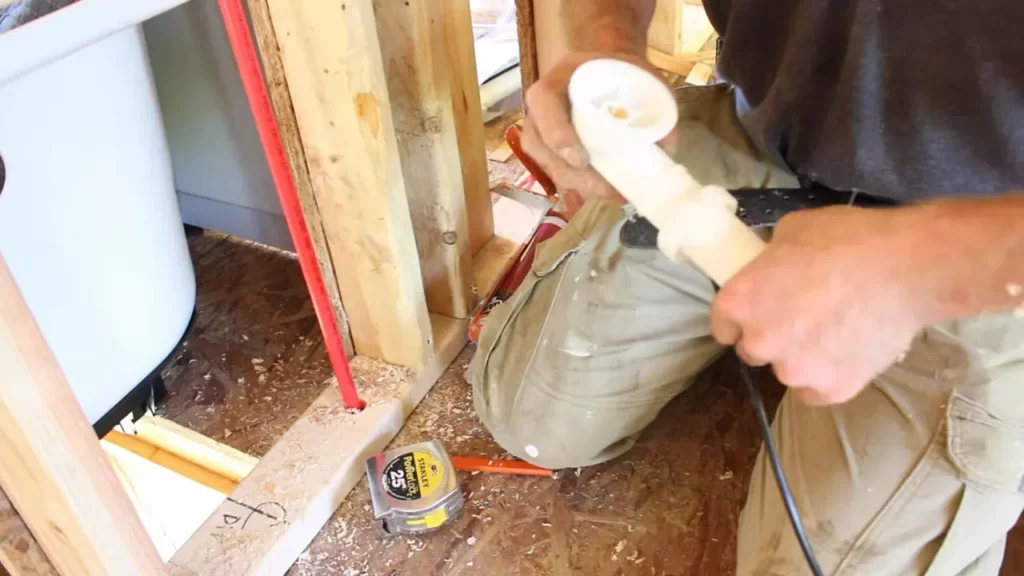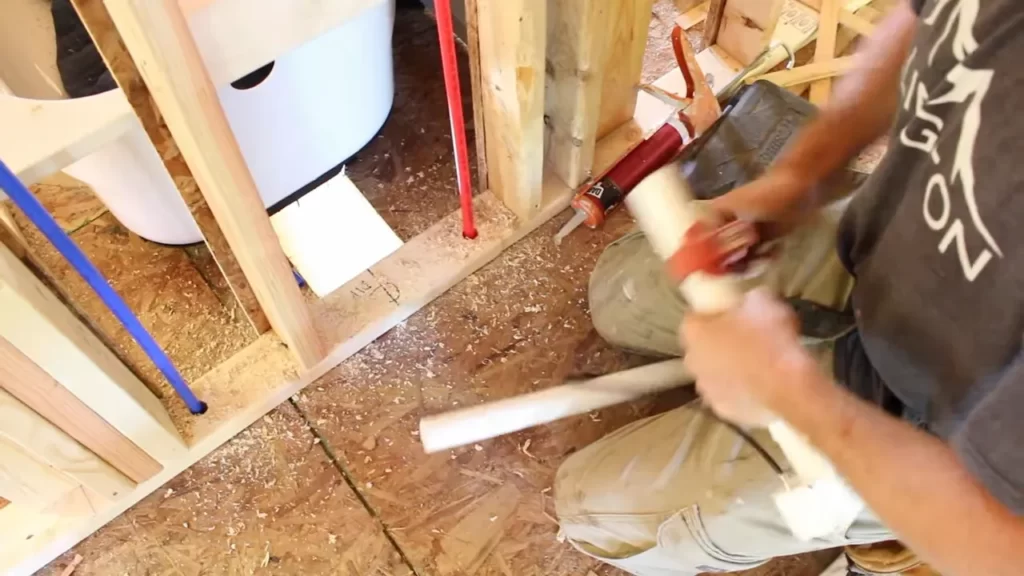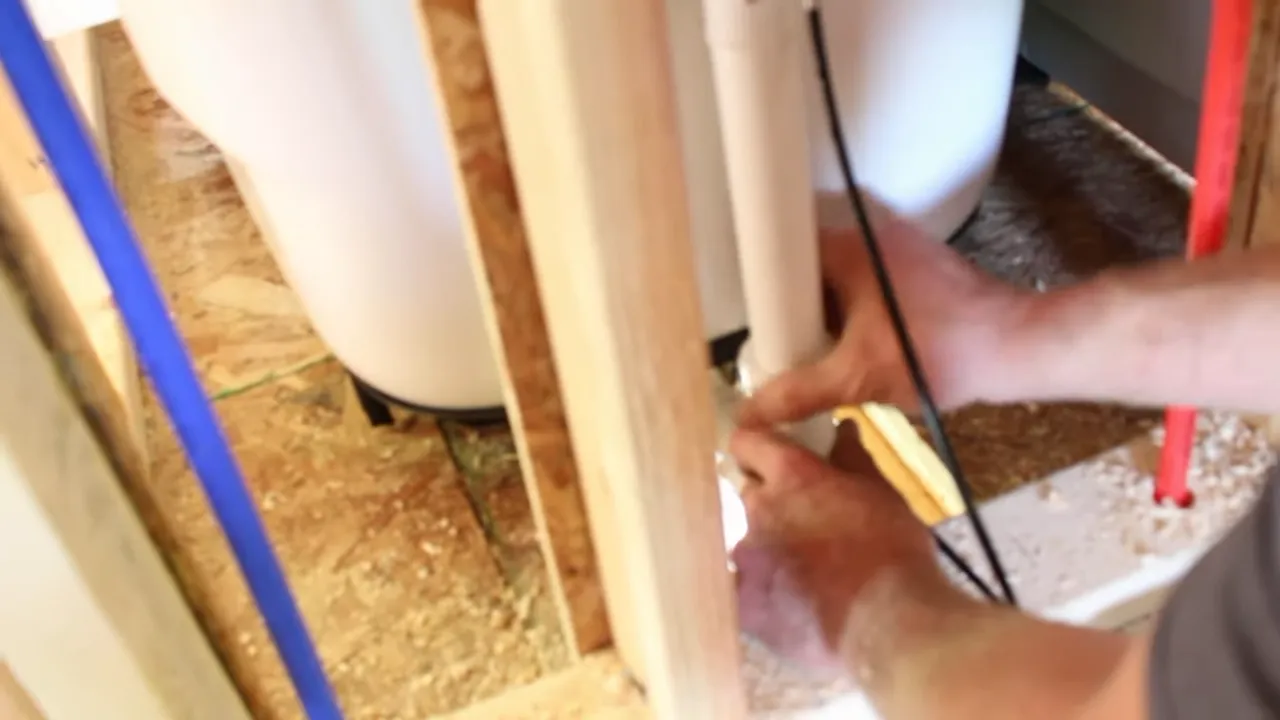To install a bathtub drain and overflow, first, remove the old drain and overflow assembly. Then, apply plumber’s putty or silicone sealant around the new drain flange and insert it into the drain hole, tightening it securely.
Finally, attach the overflow cover plate and connect the overflow pipe to the drain using a p-trap or other appropriate drainage system. A properly functioning bathtub drain and overflow are essential components of any bathroom. If you’re experiencing leaks or other issues, it may be time to replace the drain and overflow assembly.
By following these simple steps, you can easily install a new drain and overflow, ensuring a watertight seal and optimal performance. In this guide, we’ll walk you through the process, showing you how to remove the old assembly and install a new one for a hassle-free bathing experience. So let’s dive in and get started on upgrading your bathtub’s drainage system.
Before You Begin
Check the bathtubs’ compatibility with the chosen drain and overflow system
Before you begin the process of installing a bathtub drain and overflow, it is crucial to check the compatibility between the bathtub and the selected drain and overflow system. Each bathtub may have different specifications and requirements, so it is essential to ensure that the chosen drain and overflow system are suitable for your specific bathtub.
First and foremost, examine the manufacturer’s guidelines or documentation for your bathtub. This will provide important information about the required specifications for the drain and overflow system that are compatible with your bathtub. Pay close attention to the recommended size, type, and installation method for the drain and overflow system.
Additionally, take measurements of your bathtub’s drain and overflow openings. Compare these measurements to the specifications provided by the chosen drain and overflow system. Ensure that the system can be properly installed in your bathtub without any compatibility issues.
If you are unsure about the compatibility or have any doubts, it is recommended to consult with a professional plumber or the manufacturer for further guidance. Installing an incompatible drain and overflow system could lead to water leakage or other problems down the line, so it’s crucial to get it right from the beginning.
Gather all the necessary tools and materials
Once you have confirmed the compatibility of your chosen drain and overflow system with your bathtub, the next step is to gather all the necessary tools and materials. This ensures a smooth installation process without any delays or interruptions.
To install a bathtub drain and overflow, the following tools and materials are typically required:
| Tools | Materials |
|---|---|
| Adjustable wrench | Drain and overflow system kit |
| Plumbers’ putty | Teflon tape |
| Hacksaw | Screwdriver |
| Plunger | Bucket |
| Plumbing snake | Plumber’s tape |
| Level | Wire brush |
- Start by ensuring that you have all the necessary tools listed above. It is important to have the correct tools for each step of the installation process.
- Once you have gathered the tools, make sure to also have the required materials, such as the drain and overflow system kit, plumbers’ putty, Teflon tape, and plumber’s tape.
- Having all the necessary tools and materials readily available will help you stay organized and focused during the installation process.
Remember, having the right tools and materials is essential for a successful installation. It ensures that you are prepared and equipped to handle any challenges that may arise during the process.

Removing The Existing Drain And Overflow
Removing the existing drain and overflow is a crucial step when installing a new bathtub drain and overflow. In this section, we will guide you through each step to ensure a smooth and successful removal process. Let’s begin!
Locate and remove the bathtub stopper
The first step in removing the existing drain and overflow is to locate and remove the bathtub stopper. This can usually be done by twisting the stopper counterclockwise or by unscrewing it, depending on the type of stopper you have. It’s important to note that different bathtubs may have different types of stoppers, so be sure to consult your bathtub’s manual or seek professional guidance if needed.
Disconnect the overflow assembly from the bathtub
Once the stopper is removed, you can proceed to disconnect the overflow assembly from the bathtub. The overflow assembly is usually connected to the drain through a linkage, which allows the water to flow through the overflow opening. To disconnect the assembly, locate the screws or bolts that secure it to the bathtub, and carefully unscrew or remove them using the appropriate tool.
Unscrew and remove the drain from the bathtub
After disconnecting the overflow assembly, it’s time to unscrew and remove the drain from the bathtub. To do this, you’ll need a drain key or pliers specifically designed for this purpose. Insert the key or pliers into the drain and turn it counterclockwise to loosen and remove the drain. Make sure to apply steady pressure and avoid using excessive force to prevent any damage to the bathtub or surrounding area.
Once the drain is removed, take a moment to inspect the drain and overflow opening for any accumulated debris or buildup. Clean the area thoroughly using a mild cleaner and a brush or sponge if necessary.
Remember: If you encounter any difficulties or are unsure about any step in the process, it’s always recommended to consult a professional plumber for guidance to ensure a successful removal and installation process.
Now that you have successfully removed the existing drain and overflow, you’re ready to move on to the next step of installing a new bathtub drain and overflow. Stay tuned for our upcoming blog post on how to install a bathtub drain and overflow!

Preparing The Bathtub For Installation
If you’re planning to install a bathtub drain and overflow, it’s essential to properly prepare the bathtub beforehand. This will ensure a secure and leak-free installation, giving you peace of mind and a fully functional bathtub. In this section, we’ll guide you through the necessary steps to clean the drain and overflow holes in the bathtub, as well as apply plumber’s putty or silicone caulk around the drain hole.
Clean the Drain and Overflow Holes in the Bathtub
Before installing the drain and overflow, it’s crucial to start with a clean surface. Over time, debris and residues can accumulate in the drain and overflow holes, potentially causing clogs and leaks if not removed. To clean these areas effectively, follow these simple steps:
- Gather the necessary tools: Grab a pair of gloves, a small wire brush, and a bucket to collect any loosened materials.
- Remove any visible debris: Use your gloved hand or a pair of tweezers to remove any visible debris, such as hair or soap scum, from the drain and overflow holes.
- Scrub the holes: Take the small wire brush and gently scrub the walls of the drain and overflow holes, removing any stubborn residue. Be careful not to apply excessive force that could damage the bathtub surface.
- Rinse the bathtub: Once you’ve thoroughly scrubbed the holes, rinse the bathtub with clean water to remove any remaining debris or cleaning products. Ensure that all the cleaned areas are free from foreign particles before proceeding.
Apply Plumber’s Putty or Silicone Caulk around the Drain Hole
The next step in preparing your bathtub for drain and overflow installation is to apply plumber’s putty or silicone caulk around the drain hole. This is vital to create a watertight seal and prevent any potential leaks. Here’s a simple guide to help you with this process:
- Gather the necessary materials: Before starting, ensure you have plumber’s putty or silicone caulk, a putty knife or caulk gun, and a clean rag.
- Prepare the putty or caulk: If you’re using plumber’s putty, take a small amount and knead it until it becomes soft and pliable. For silicone caulk, cut the tip of the caulk tube at a 45-degree angle.
- Apply the putty or caulk: Take the plumber’s putty or caulk and carefully apply it around the drain hole, ensuring complete coverage. Use a putty knife or caulk gun to spread it evenly and remove any excess. Wipe away any excess putty or caulk with a clean rag.
- Let it cure: Allow the plumber’s putty or silicone caulk to cure as per the manufacturer’s instructions. This typically takes a few hours, but the exact time will depend on the specific product you’re using.
By following these steps, you’ll have a clean and properly sealed bathtub, ready for the drain and overflow installation process. Taking the time to prepare the bathtub thoroughly will ensure a successful installation and a functional bathtub that you can enjoy for years to come.

Installing The Drain Assembly
Installing the drain assembly is an essential step in ensuring a functional and leak-free bathtub. It involves applying a layer of plumbing tape to the threads of the drain flange, inserting the drain into the drain hole, and connecting the drain shoe and overflow together. Let’s go through each step in detail.
Apply a Layer of Plumbing Tape to the Threads of the Drain Flange
To prevent any potential leaks, it is important to apply a layer of plumbing tape to the threads of the drain flange. This tape acts as a sealant, ensuring a tight and secure connection. Simply wrap the plumbing tape around the threads in a clockwise direction. Ensure that you cover the entire threaded area with the tape. This simple yet effective step will help prevent any water from seeping out once the drain assembly is installed.
Insert the Drain into the Drain Hole and Tighten It Using a Drain Wrench
Once you have applied the plumbing tape, it’s time to insert the drain into the drain hole. Ensure that the drain is aligned properly with the hole before proceeding. Insert the drain and use a drain wrench to tighten it securely. A drain wrench provides the necessary torque to ensure a snug fit without damaging the drain. Use a clockwise motion to tighten the drain, making sure it is firmly in place. Be careful not to overtighten, as this could cause damage to the drain or surrounding components. Once tightened, check for any movement or looseness.
Connect the Drain Shoe and Overflow Together Using a Linkage Assembly
Now that the drain is securely in place, it’s time to connect the drain shoe and overflow together using a linkage assembly. The linkage assembly ensures that the drain and the overflow work in tandem to control the water flow. Carefully align the drain shoe and overflow and insert the linkage assembly through the designated holes. This assembly typically consists of a linkage rod, plunger, and various connecting pieces. Follow the manufacturer’s instructions to properly assemble and connect the linkage components. Once connected, test the drain by opening and closing it several times to ensure smooth operation.
In conclusion, installing the drain assembly requires attention to detail and following the steps outlined above. By applying a layer of plumbing tape, inserting the drain securely, and connecting the drain shoe and overflow using the linkage assembly, you can ensure a properly functioning bathtub drain with minimal risk of leaks.
Installing The Overflow Assembly
One important step in installing a bathtub drain is installing the overflow assembly. This assembly is responsible for preventing the tub from overflowing by allowing excess water to drain through the overflow opening. In this section, we will walk you through the process of installing the overflow assembly, ensuring that it is properly sealed and connected to the drain shoe.
Apply plumber’s putty or silicone caulk around the overflow assembly hole
Before inserting the overflow assembly into the hole, you need to create a watertight seal. To do this, apply plumber’s putty or silicone caulk around the overflow assembly hole.
To apply plumber’s putty, take a small amount and roll it into a rope-like shape. Place the rope of putty around the hole, making sure it is evenly distributed and covers the entire circumference.
If you prefer to use silicone caulk, cut the tip of the caulk tube at a 45-degree angle and insert it into a caulk gun. Squeeze the caulk into a thin and even line around the hole.
Insert the overflow assembly into the hole and tighten the retaining nut
Once the plumber’s putty or silicone caulk is applied, carefully insert the overflow assembly into the hole. Make sure the assembly is aligned properly and fits snugly.
Next, tighten the retaining nut located on the backside of the overflow assembly. Use a wrench or pliers to secure the nut, ensuring that it is firmly in place. Be careful not to overtighten, as this could damage the assembly or the tub.
Connect the overflow assembly to the drain shoe using a linkage assembly
To connect the overflow assembly to the drain shoe, you will need to use a linkage assembly. This assembly consists of a trip lever, connecting rod, and a clevis.
- Insert the linkage assembly through the overflow opening and slide the clevis onto the rod.
- Adjust the length of the connecting rod by twisting it to align with the opening in the drain shoe.
- Once aligned, secure the clevis to the trip lever with the included retaining clip.
Ensure that the linkage assembly is properly attached and moves smoothly without any resistance. This will ensure that the overflow is functioning correctly.
By following these steps, you can successfully install the overflow assembly for your bathtub drain. Remember to properly seal the assembly and secure all connections to ensure proper functionality and prevent any leaks.
Testing And Finishing Touches
Once you have successfully installed the bathtub drain and overflow, it is time to move on to the crucial step of testing and adding those final touches. This step ensures that everything is working properly and there are no leaks or issues that need to be addressed. In this section, we will discuss how to test the bathtub drain and overflow for any leaks, make necessary adjustments if needed, and install the bathtub stopper. Let’s dive right in!
Test the bathtub drain and overflow for any leaks
Before proceeding with the final installation, it’s essential to make sure that your bathtub drain and overflow are leak-proof. Nobody wants to deal with a water disaster after all the hard work you put into installing everything. To test for leaks, follow these simple steps:
- Fill the bathtub with water, ensuring that the drain is closed.
- Let the water sit for about 15 minutes. This will allow you to observe if there are any leaks or water loss.
- Inspect the area around the drain and overflow. Look for any signs of water or moisture.
- If there are no leaks, congratulations! Your installation was successful. However, if you notice any leaks, don’t panic. You can easily fix them by making necessary adjustments.
Make necessary adjustments if needed
If you encountered any leaks during the testing phase, it’s crucial to make the necessary adjustments to ensure a watertight seal. Here are a few steps you can take to fix any leaks:
- Remove the bathtub stopper or strainer to access the drain and overflow.
- Inspect the drain components and connections for any loose fittings or misalignments.
- Tighten any loose connections using a wrench or pliers until they are snug and secure.
- Apply plumber’s putty or silicone caulk to the areas where leaks were detected. This will create a watertight seal and prevent any further leakage.
- Reinstall the bathtub stopper or strainer and repeat the testing process to ensure that the leaks have been successfully fixed.
Install the bathtub stopper and test its functionality
Now that you have successfully tested and fixed any leaks, it’s time to install the bathtub stopper. The stopper is an essential component that allows you to control the water flow in your bathtub. Follow these steps to install the stopper:
- Remove the existing stopper or strainer if you haven’t already done so.
- Insert the new stopper into the drain, ensuring a tight fit.
- Test the functionality of the stopper by filling the bathtub with water and pressing down on the stopper to engage the seal.
- Release the stopper to allow the water to drain out. Repeat this process a few times to ensure smooth operation.
- If you notice any issues with the stopper’s functionality, check for any obstructions or misalignments. Make the necessary adjustments to ensure proper operation.
By following these steps and performing the necessary tests, you can ensure that your bathtub drain and overflow are in perfect working condition, and your installation process is complete. Take a moment to appreciate your hard work and enjoy the satisfaction of knowing that your bathtub is ready for use!
Frequently Asked Questions
How Much Does It Cost To Replace A Bathtub Drain And Overflow?
The cost of replacing a bathtub drain and overflow can vary depending on factors like the type of drain and overflow, location, and any additional repairs needed. On average, it can cost between $150 to $300 for materials and labor.
How Do You Install A New Drain In A Bathtub?
To install a new drain in a bathtub, follow these steps: 1. Remove the old drain with a drain removal tool. 2. Clean the area around the drain hole. 3. Apply plumber’s putty around the new drain flange. 4. Insert the new drain into the hole and tighten it.
5. Test for leaks by filling the tub with water.
Do You Use Plumbers Putty On Tub Drain?
Yes, plumbers putty is commonly used on tub drains to create a watertight seal. It helps prevent leaks and ensures the drain is securely sealed in place.
How Do You Replace A Bathtub Overflow Drain?
To replace a bathtub overflow drain, follow these steps: 1. Remove the old drain cover. 2. Disconnect the overflow pipe from the drain. 3. Unscrew and remove the old drain assembly. 4. Install and secure the new drain assembly in place.
5. Reconnect the overflow pipe and replace the drain cover.
Conclusion
Installing a bathtub drain and overflow may seem like a daunting task, but with this step-by-step guide, you can do it easily. By following the instructions, you can ensure a leak-free and properly functioning bathtub drain. Remember to use the right tools and materials and take your time to avoid any mistakes.
With a little patience and attention to detail, you’ll have a fully functional bathtub drain and overflow in no time. Happy DIY-ing!
